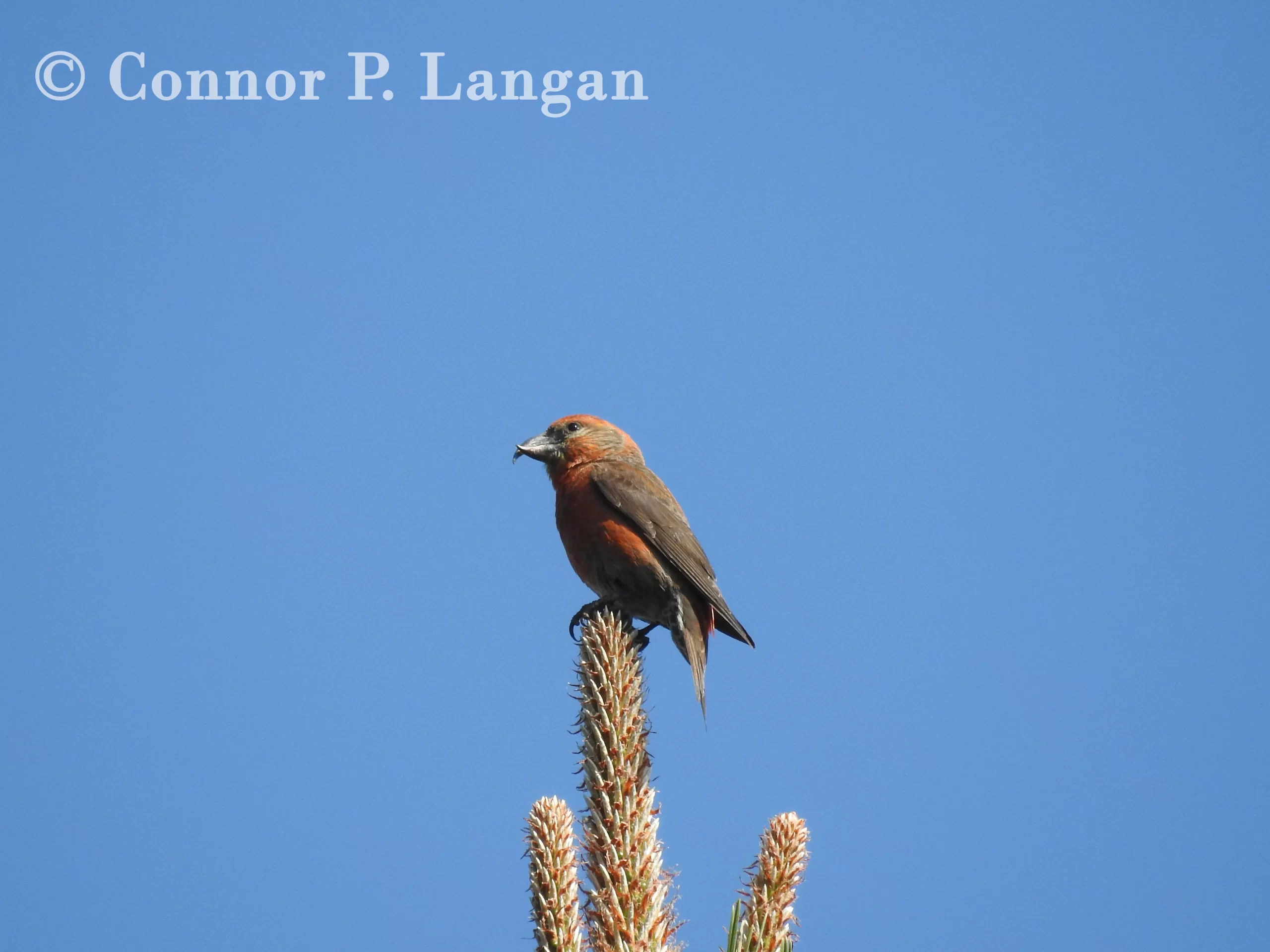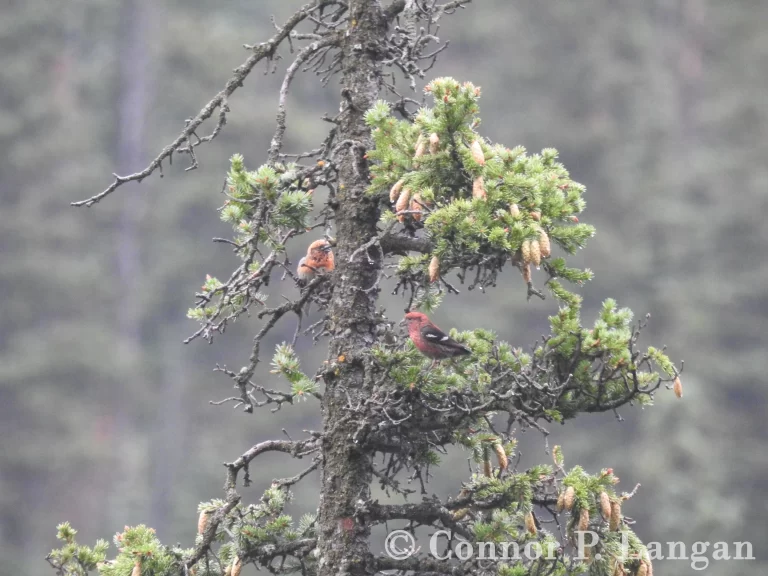Description
Adaptable finches with large crossed beaks, Red Crossbills have big heads and short tails with a noticeable notch.
Red Crossbills can be quite variable in size, with some birds being around 5 inches long while others may be closer to 8 inches long. These birds usually weigh between 0.5 to 0.8 ounces.
These finches are one of the most diverse birds in the world, with some 28 subspecies of Red Crossbills in existence today. While there are plenty of subspecies, all Red Crossbills look fairly similar.
Male Red Crossbills are red-orange overall with dark red wings.
Female Red Crossbills are a yellow-orange color overall with dark wings.
Immature birds are a pale, drab color overall with lots of dark streaks covering their bodies. These birds have dark wings just as adults do.
Behavior
Red Crossbills are a highly social bird species, with most birds associating with groups of Red Crossbills no matter the time of year. During the nesting season, these birds will form loose nesting colonies with other Red Crossbills.
Though these finches are very social, quarrels may break out amongst birds within a group over disputes about food, territory, or mates.
Diet
This species is uniquely adapted to consume the seeds of coniferous trees. Pine cones and their seeds, in particular, are sought by groups of Red Crossbills. The beaks of Red Crossbills help them to extract seeds from pine cones-a feat that most other birds cannot accomplish.
To remove the seeds from pine cones, Red Crossbills slightly open their beaks before placing them between two pine cone scales. Red Crossbills then close their beaks and expose a pine seed, which they extract using their beaks and tongues.
Red Crossbills are also known to eat insects during times in which such prey is plentiful, and they may eat seeds from bird feeders.
Habitat
Since Red Crossbills are so dependent on coniferous forests for feeding, it is unsurprising that these birds will almost always be found in pine trees.
Red Crossbills can be found in mature coniferous forests that produce good cone crops for these finches to eat. Aside from coniferous forests, look for these birds in places with plenty of pine trees. Parks, shelterbelts, and cemeteries are good locations to search.
Range
Red Crossbills have an extensive range, as they can be found wherever pine trees exist. These finches occur from Alaska south to Nicaragua and many locations in between.
These finches can be found in the boreal forests of Alaska, Canada, the Northeast, and the Upper Midwest year-round. They’re also common in the pine forests of Western North America and the mountainous pine forests of the Southwest, Mexico, and Central America.
Populations of Red Crossbills also exist in the Appalachian mountains in states like North Carolina, Tennessee, West Virginia, and Alabama.
Red Crossbills may disperse to a wide range of places during the nonbreeding season, so watch out for these birds in locations with pine trees.
Breeding
Red Crossbills are thought to be monogamous, with both male and female birds collaborating to select a nesting location.
Females usually build nests without help from males, but males may deliver materials to females on occasion. Females choose to construct nests near the base of pine trees. Nests are located in a location that features good cover, but this species tends to favor open woodlands for nesting rather than dense stands of conifers.
Females build cup-shaped nests made mostly of branches and twigs. The interior of the nest is lined with softer materials like grasses, hair, and feathers.
Both female and male Red Crossbills incubate eggs and feed the young. These finches raise 1 to 2 broods of eggs each year, with each clutch containing 2 to 6 young. It likely takes about 2 weeks for young to hatch, and just over 2 weeks for nestlings to fledge.
Backyard Birding
Red Crossbills are uncommon visitors to backyard feeders. Most of the time, these finches would prefer to feed from pine trees, but they have been known to stop by bird feeders where they consume seeds such as sunflowers seeds.
These birds are not cavity nesters, so they will not choose to construct a nest in a birdhouse. Red Crossbills may linger around a backyard if a substantial amount of pine trees are nearby.
Population Status
Red Crossbills have fared better than other finch species in the past half-century, as they have experienced minimal declines in their overall population. There are an estimated 26 million Red Crossbill species worldwide.


